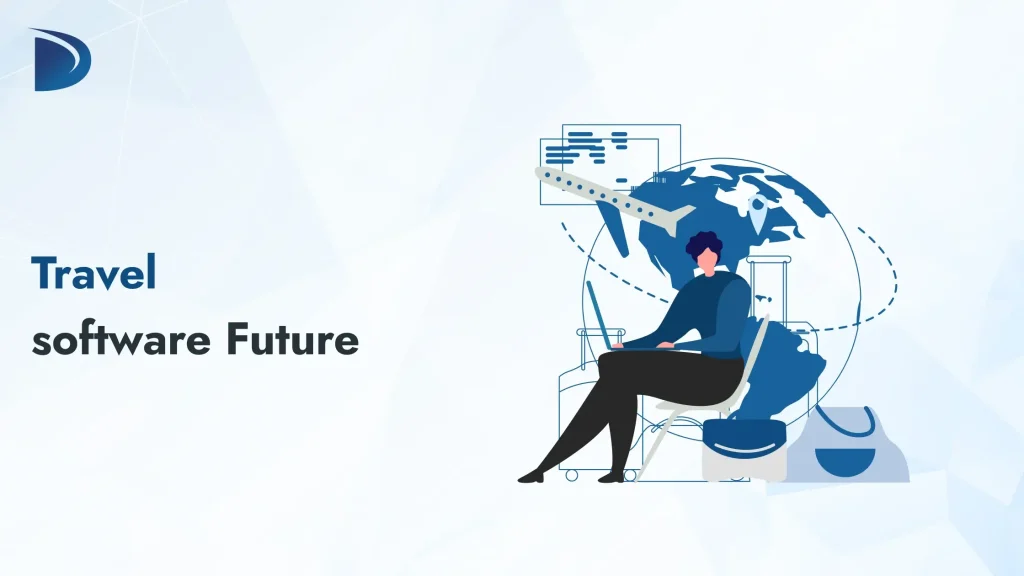Table of Contents
Travel is no longer centered on tickets, timetables, or lengthy phone calls. It is now driven by software. Every change we see, from contactless check-ins to smart trip planners, begins with how the tools behind the scenes are developed.
This shift is ongoing and already transforming how travelers and companies move, plan, and respond.
In this blog, we will explore how to develop travel software for the future, shaping the industry by solving old problems and creating faster, easier, and more reliable ways to plan and experience trips.
Why Develop Travel Software Matters Now?
That is why software cannot remain generic. Off-the-shelf tools do not support changing habits, local rules, or business complexity. Travel companies now build their own systems to keep up with demand and shape what comes next.
That is why software cannot remain generic. Off-the-shelf tools do not support changing habits, local rules, or business complexity. Travel companies now build their own systems not just to keep up, but to shape what comes next.
Every key experience, from booking and payment to rebooking and upgrading, now depends on what happens behind the scenes in software.
How Travel Software Development Is Shaping the Future of Travel?
1. Personalized Journeys, Not Just Bookings
Travel is no longer one-size-fits-all. Some people explore alone, others book for families, or change dates on the go. The right software manages all of this in real time.
Smart travel systems now adjust prices, schedules, and recommendations instantly.
AI-powered planners respond to delays, preferences, or sudden changes during a trip.
Loyalty platforms are evolving as well. They reward how you travel, not just what you purchase.
This level of personalization is not just a bonus; it is an essential part of how software is actively shaping the future of travel.
2. Smarter, Faster, Contactless Travel
Travel software now reduces delays at airports, hotels, and in transportation. Mobile-first tools enable instant booking, digital payments, and remote changes.
Check-ins, boarding, and hotel access now use QR codes, biometrics, and NFC, reducing wait times and staff requirements.
Digital travel wallets store tickets, identification, and health records, making travel safer and more convenient.
By replacing paperwork and lines with real-time systems, software is transforming how people move across borders and checkpoints.
3. One Platform, Many Borders
Going global without the friction.
Modern travel systems are built on API-first architecture that connects flights, hotels, insurance, and local services in one platform. This makes it easier to update, manage, and scale offerings across countries.
Multi-currency and multi-language support allows travelers to search, book, and pay without confusion. It works smoothly whether they are from one country or traveling to another.
Edge content delivery provides the correct documents, rules, and support details based on the traveler’s location. This keeps the experience fast, accurate, and locally relevant.
Wherever you go, your trip speaks your language and fits your budget.
4. Immersive Planning and Discovery
Planning no longer begins with brochures or vague reviews. Today’s tools allow travelers to see, explore, and understand destinations before making any bookings.
AR and VR let users walk through hotels, check the atmosphere of a neighborhood, or view landmarks before deciding what feels right.
3D tours replace static images, helping travelers choose better options and avoid second-guessing.
Interactive maps provide real-time information such as weather, walkability, and local tips, enabling smarter decisions from the outset.
By turning research into an experience, travel software is changing how people plan, making every trip feel familiar before it even begins.
5. Support That Solves, Not Just Replies
No more waiting on hold.
Travel software now powers support systems that resolve issues without callers needing to dial. Chat tools with real-time intelligence can handle rebooking, process refunds, and manage upgrades automatically. They do not just respond – they act.
Bots learn to understand context. For simple issues, they act; for more complex ones, they direct users to a human staff member. This blend keeps support efficient without feeling robotic.
Support is now part of the travel experience itself, not a separate help zone or platform. Help is built into the booking flow, available in multiple languages, and always accessible in the app.
6. Unified Booking Across Everything
Travelers expect to plan their entire trip in one place. They want to compare flights, add hotels, include insurance, and arrange local transport, all without using multiple apps.
Connected booking systems make this possible. APIs link flights, hotels, rentals, and services, allowing the entire trip to be planned in a single flow.
Bundling logic adjusts prices, schedules, and deals in real time based on location, group size, or booking stage.
Vendors stay coordinated through a shared platform, so users avoid duplicate steps and missing details. Intelligent software ensures the booking process feels seamless from start to finish.
7. Greener Choices, Built Into the Journey
Eco-friendly travel is now integrated into the booking process. Users can filter flights by emissions, select certified hotels, or choose lower-impact transportation, all on the same platform.
Software tracks trip emissions and suggests better options during booking. Small changes, such as choosing trains over short flights, are highlighted in real time.
- CO₂ tracking is built into itineraries
- Green tags show energy-efficient stays
- Local transit links replace car rentals
These features make sustainability easier to implement, rather than just something mentioned in passing.
8. Security and Trust, Without the Friction
Travelers share a lot of personal and financial data, such as passport information, payment details, and medical documents. Software now keeps this data secure without slowing down the experience.
- Encryption and tokenization protect transactions across devices and borders.
- Identity verification is handled using biometrics or digital IDs without extra steps.
- Fraud detection tools spot unusual behavior in real time and take preventive action.
Trust is built quietly, behind the scenes. Good travel software protects users without adding extra clicks or delays.
How is software changing Travel for Everyone?
For Travelers:
- Trips are easier to manage with real-time updates and support.
- Bookings adjust to your plans, not the other way around.
- The entire journey is handled in one place, not across multiple apps.
For Travel Companies:
- Platforms now support planning, booking, and post-trip care.
- Tools designed for real needs outperform generic platforms.
- Faster updates and smarter systems are now expected.
For the Industry:
- Software now powers the entire travel ecosystem.
- Changes in behavior, demand, and access all depend on technology.
Conclusion
Travel software development is more than a backend upgrade; it is redefining how the entire industry operates. By introducing intelligence, flexibility, and personalization at every stage of the journey, software is quietly becoming the foundation of modern travel. Companies that build with this in mind are not just keeping up they are leading the future of travel.

